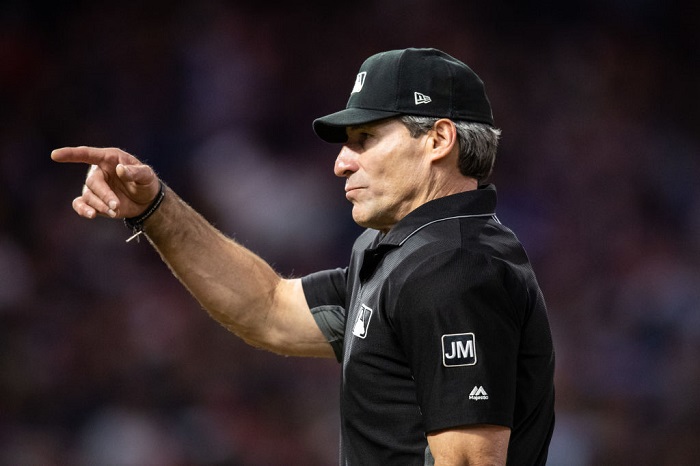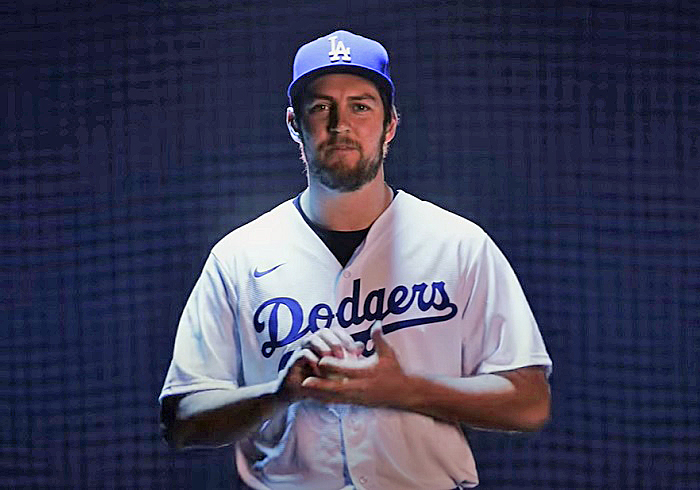On February 8, 2021, The Athletic (subscription required) published the article, “MLB making changes to the baseball, deadening it — but by how much?” This is a top-notch article by Athletic writers Eno Sarris and Ken Rosenthal; well worth the time to read. If you do not have a subscription, find someone who does, buy them a cold one, and read for yourself.
A couple of salient points from the article:
- Reportedly, this is a path to increase consistency, efficiency, and standardization of the gameday baseball, which has performed differently over the last few years, particularly in home runs.
- Rawlings has identified a key way to change the ball’s construction and center it within MLB specifications.
- An independent lab found the change could reduce home run rates by around five percent.
- The addition of five more teams using baseball humidors, bringing the total number to 10.

(Photo courtesy of LA Dodgers)
Consistency and standardization of equipment in professional baseball is a good thing. Who can argue against having consistency of baseballs that pitchers throw at velocities averaging close to 95 mph and released toward the waiting hitter from approximately 55 feet away? I’m confident that hitters will be unanimous in their desire for uniformity in baseballs traveling close to the century mark.
But how does using baseball humidors by one-third of MLB teams address standardization? The humidity in Los Angeles is not the same as Atlanta, or Miami, or St. Louis. Should all teams be required to store game baseballs in humidors for consistency?
What about other aspects of the game in need of consistency and standardization?
Strike Zone
OK, stop giggling. I know that the strike zone varies by home plate umpire, and during the course of every game, even that zone seems to be redefined … frequently. Home plate umpires are literally at the heart of baseball, requiring correct ball and strike calls on approximately 300 pitches in a 9-inning game.
According to a study by Boston University Master Lecturer Mark T. Williams and a team of graduate students at the Questrom School of Business experienced in data mining, analytics, and statistics, Major League umpires had a twenty percent error rate over an 11-year period, covering more than four million pitches. MLB likely disagrees with that percentage, but it has never released umpire statistics for comparison.
If MLB is committed to equipment consistency, should they not be just as committed to getting balls and strikes correct? After all, incorrect calls affect strategy, player performance, statistics, and game outcomes. Perhaps MLB should place a higher priority on the quality of umpiring than deadening the baseball. Or has the time arrived for electronic determination of balls and strikes?

(Photo credit – Brace Hemmelgarn)
MLB defensive shifts
From 2016 through 2018 MLB teams used defensive shifts 14.4 percent of plate appearances; in 2019 that percentage increased to 25.6. While there is a debate whether scoring is reduced by defensive shifts, it has become a common tactic during games, seemingly by teams like the Dodgers which use advanced analytics in their game planning.
If MLB is planning to introduce a modified baseball that will reduce offense, perhaps they should also eliminate, or control, infield defensive shifts. Keeping shortstops and third basemen on the left side of the infield, first and second basemen on the right side of the infield until a pitch is delivered to the hitter. And, no longer allowing infielders to become rover outfielders like slow-pitch softball.
Balance sheet baseball: deadening the baseball will benefit pitchers, eliminating/controlling defensive shifts should help hitters, especially pull hitters.
Pitchers mound
With the introduction of a modified baseball, MLB and the Players Association should give serious consideration to lowering the pitching mound, and perhaps moving the pitching plate from the current 60’-6” to 62.’ In 1969 the pitchers mound was lowered from 15” to the current 10,” and the strike zone was modified to its current dimensions. Those changes resulted in a significant uptick in offense.
According to the January 29, 2019 issue of Journal of Science and Medicine in Sports (The influence of mound height on baseball movement and pitching biomechanics):
- Lowering the mound height does not affect the velocity, spin, or break of the baseball performance
- Other potential modifications, such as increasing pitching distance or altering the strike zone, are issues worth future study.
- Shoulder and elbow kinetics of fastballs may be slightly less with a lowered mound, which may possibly reduce the risk of pitching injury.
Balance sheet baseball: deaden baseballs, modify the mound.
Pitchers using foreign substances
Statistics don’t lie, as baseball spin rates increase, batting averages decrease, and strikeout rates rise. The Dodgers newest addition to their starting rotation, Trevor Bauer, has estimated that about 70 percent of all major league pitchers use a foreign substance on the ball to increase spin rates, adding, “…it’s a bigger advantage than steroids ever were.” Although MLB communicated in 2020 that a crackdown was coming on pitchers using foreign substances, it appears that was nothing more than saber rattling.

If MLB is going to tacitly accept pitcher’s use of foreign substances, then adjust the rules so that all pitchers have access to the same substance. Shouldn’t there be consistency for all MLB pitchers rather than looking the other way for 70%?
Balance sheet baseball: foreign substances for pitchers, allow hitters to use pine tar on the sweet spot of the bat.
* * *
Consistency, efficiency, and standardization; what are other areas that MLB should be applying these standards? Let us hear from you Dodgers fans.
* * * * * *




 February 11th, 2021 at 9:00 am
February 11th, 2021 at 9:00 am  by 0799291000348
by 0799291000348  Posted in
Posted in 

[…] Story continues […]